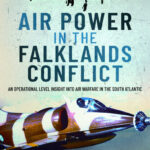
American airpower; Australian air force; all airlines.
Keith Lovegrove, Airline: Identity, Design and Culture (London: Laurence King Publishing, 2013). This is one of those books that is more about the pictures than the text (which is tiny) but it’s no less interesting for that. The four chapters cover the history (mainly 1940s through to the 1990s, with glances before and after) of fashion (as in flight and, more especially, cabin crew), food, interiors and design (as in corporate branding and aircraft colour schemes). The changing fashions are predictably outrageous — my favourite would have to be the all-denim look of Denim Air (yes, really) — and the food options intriguing — I’ve never been an airline food hater, and as Lovegrove explains, making more or less palatable food options for hundreds of passengers to be served hot at 30,000 feet, flight in, flight out, is a regular logistical miracle. The chapter on interior cabin design had surprisingly little on the economics of packing more people in, or even the converse nostalgic recollections of the existence of legroom; but it does take in the promenade deck of the Empire flying boats as well as the fishbowl viewport proposed for a 747 first class lounge in the cargo hold! Perhaps the most interesting part for me was the closing discussion of the furore over British Airways’ various rebranding exercises. Happily, Speedbird flies on.
Michael S. Sherry, The Rise of American Air Power: The Creation of Armageddon (New Haven: Yale University Press, 1987). Another book I’ve already read! Can’t blame Covid for this one, as I read it not long after my PhD. Still, it’s a classic and well worth the reread. In some ways it parallels my own book, as it traces the intellectual and cultural history of the rise of the American form of the theory of the knock-out blow from the air, always more invested in precision bombing than was the case in Britain. But Sherry is both more wise and more ambitious. As he goes on he gets more involved in telling the story of the actual development of USAAF strategic bombing in theory and then practice, taking his story up to the use of the atomic bombs against Japan, but always stressing the ideas and desires of the leaders who built and directed the air weapon. Sherry is very aware of the paradoxes of airmindedness (even if, somewhat surprisingly, he never uses the term); he’s very good on the way that the idea of the bomber as a war-winning weapon was almost necessarily accompanied by a refusal to explain explain how, exactly, it would win, and, conversely, how it the bomber was so arrestingly horrible in the imagination of the interwar period became mindnumbingly difficult to imagine when it was actually being used to routinely turn cities into embers by 1945. (Churchill apparently believed, even by the time he wrote his war memoirs, that the US had only been preparing for large scale raids on Japanese cities, not that it had carried them out.) If I had to make a criticism, it would be that while Sherry is certainly aware of the slide from precision to indiscriminate bombing in the European theatre, he might have used this more to complicate his discussion of the same slide in the Pacific. Which is easy to say when you’ve read the historians who subsequently built their work on the foundations of this book!
Alan Stephens, The Royal Australian Air Force, The Australian Centenary History of Defence vol. 2 (Oxford University Press, 2001). This may have been one of the first aviation histories I bought after embarking on studying history, as I’m pretty sure I bought it when it was newly published. It’s emphatically not a shoot-em-up: while there are some illustrative accounts of air combat, this is an institutional history and its purpose is to describe how the RAAF has evolved as an organisation. That’s not to say The Royal Australian Air Force is dry, or at least I didn’t find it so, as Stephens uses significant people and their careers to help tell the story (and the personalities of the early RAAF are fascinating in their own right). And he never holds back from criticising the leaders (political and military) for their own goals, with a running theme being the supine attitude taken towards Australia’s senior alliance partners which, for example, meant that Australia had no control in any sense of the tens of thousands of airmen sent out to fight in Bomber Command, whether in nominally-RAAF Article XV squadrons or not; Australia’s role in the bombing war could not even be quantified except in the broadest terms. It’s not a perfect book. In a couple of places Stephens suggests that a Japanese invasion of Australia was possible as late as 1943 (since he says that the Battle of the Bismarck Sea definitively ended that threat), which is not true, and parts of the book were rather familiar, having recently read Going Solo (which covers the history of the RAAF for 1946-71). But Stephens is Australia’s finest airpower historian and this is about as good as a one-volume history of the RAAF as you could hope for.
![]() This work is licensed under a Creative Commons Attribution-NonCommercial-NoDerivatives 4.0 International License.
Permissions beyond the scope of this license may be available at http://airminded.org/copyright/.
This work is licensed under a Creative Commons Attribution-NonCommercial-NoDerivatives 4.0 International License.
Permissions beyond the scope of this license may be available at http://airminded.org/copyright/.






I think Sherry was on my graduate reading list for … International History, maybe? Back then it was called “Diplomatic History” but with Iriye there was a lot of war and peace…
I can imagine!